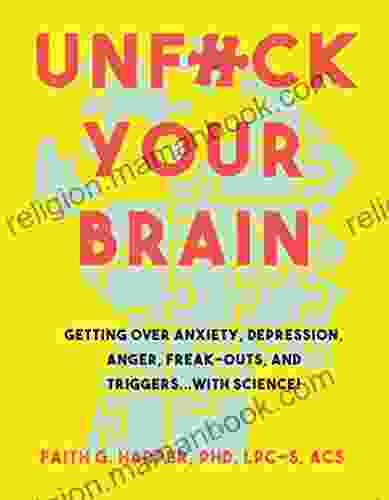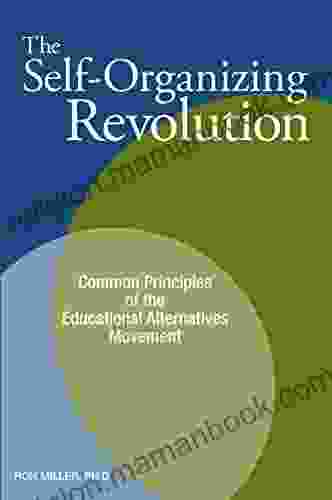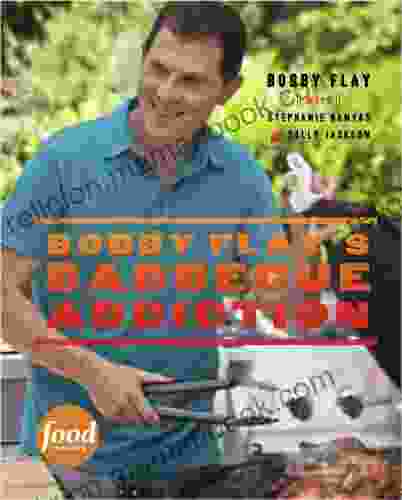Common Principles of the Educational Alternatives Movement: Fostering Personalized Learning, Equity, and Social Justice

The Educational Alternatives Movement (EAM) has emerged as a transformative force in education, advocating for alternative approaches to traditional schooling that prioritize personalized learning, equity, and social justice. This movement encompasses a diverse range of educational models, from charter schools and magnet schools to homeschooling and unschooling, all of which share a core set of principles that guide their practices.
5 out of 5
| Language | : | English |
| File size | : | 396 KB |
| Text-to-Speech | : | Enabled |
| Screen Reader | : | Supported |
| Enhanced typesetting | : | Enabled |
| Word Wise | : | Enabled |
| Print length | : | 112 pages |
| Lending | : | Enabled |
Personalized Learning
Central to the EAM is the belief that every student has unique learning needs and deserves an education tailored to their individual strengths and interests. Alternative educational models provide students with greater autonomy and flexibility in their learning pathways, allowing them to pursue their passions and develop at their own pace. This personalized approach fosters self-directed learning, critical thinking, and problem-solving skills, equipping students with the tools they need to thrive in a rapidly changing world.
Equity
The EAM is rooted in the principle of equity, recognizing that all students, regardless of their background or circumstances, deserve access to a high-quality education. Alternative educational models challenge the systemic barriers that often prevent marginalized students from reaching their full potential. By providing individualized support, culturally responsive curriculum, and wrap-around services, EAM schools strive to create inclusive learning environments where every student feels valued and empowered.
Social Justice
Beyond personalized learning and equity, the EAM is also deeply committed to social justice. Alternative educational models emphasize the importance of critical consciousness, civic engagement, and social activism. Students are encouraged to question the status quo, advocate for justice, and work towards a more equitable and sustainable society. By fostering a culture of empathy, compassion, and collaboration, EAM schools empower students to become responsible citizens and change-makers.
Other Key Principles
In addition to the core principles of personalized learning, equity, and social justice, the EAM embraces a number of other key principles that guide its practices:
- Choice and Autonomy: Students should have the right to choose their educational pathway and have a say in their learning experiences.
- Flexibility and Adaptability: Alternative educational models should be flexible enough to meet the diverse needs of students and adapt to changing circumstances.
- Collaboration and Partnerships: EAM schools foster partnerships with families, community organizations, and other educational institutions to provide a comprehensive support system for students.
- Continuous Improvement and Innovation: Alternative educational models are constantly evolving and innovating to improve their practices and better meet the needs of students.
Examples of Educational Alternatives
The EAM encompasses a wide range of educational alternatives, each with its unique approach to personalized learning, equity, and social justice. Here are a few examples:
- Charter Schools: Publicly funded schools that operate independently from the traditional school district, offering specialized curriculum and flexible learning models.
- Magnet Schools: Public schools that focus on specific areas of interest, such as STEM, performing arts, or international studies, providing students with specialized learning experiences.
- Homeschooling: Parents teach their children at home, following their own curriculum and educational philosophy.
- Unschooling: A form of homeschooling where children learn through play, exploration, and real-life experiences, without a formal curriculum or structured instruction.
- Free Schools: Independent schools that are not subject to government regulation, offering a unique and often alternative approach to education.
Benefits of the Educational Alternatives Movement
The EAM has gained traction due to its numerous benefits for students, educators, and society as a whole. Here are some of the key advantages:
- Increased Student Engagement and Motivation: Personalized learning and flexible learning models foster student interest, leading to higher engagement and motivation.
- Improved Academic Outcomes: Studies have shown that students in alternative educational settings often perform better academically than their peers in traditional schools.
- Reduced Disparities: By addressing systemic barriers and providing individualized support, EAM schools can help reduce educational disparities and promote equity.
- Cultivation of Critical Thinkers and Problem-Solvers: The emphasis on critical thinking, problem-solving, and social activism prepares students for success in higher education and the workforce.
- Promotion of Social Justice: EAM schools foster a culture of empathy, compassion, and civic engagement, equipping students to contribute to a more just and equitable society.
Challenges and Criticisms
While the EAM has achieved significant success, it also faces some challenges and criticisms:
- Funding: Alternative educational models often rely on funding outside of traditional school district budgets, which can create financial constraints.
- Quality Control: Some critics argue that the lack of government oversight in certain EAM schools can lead to inconsistent quality of education.
- Limited Access: Not all students have access to high-quality alternative educational options, especially in underserved communities.
- Accountability: As EAM schools operate with greater autonomy, there is ongoing debate about how to ensure accountability for student learning outcomes.
The Educational Alternatives Movement is a vibrant and growing force in education, challenging traditional schooling approaches and advocating for personalized learning, equity, and social justice. While the movement faces challenges, its commitment to these core principles has the potential to transform education and empower students to reach their full potential. As the EAM continues to evolve and innovate, it will undoubtedly play a significant role in shaping the future of education for generations to come.
5 out of 5
| Language | : | English |
| File size | : | 396 KB |
| Text-to-Speech | : | Enabled |
| Screen Reader | : | Supported |
| Enhanced typesetting | : | Enabled |
| Word Wise | : | Enabled |
| Print length | : | 112 pages |
| Lending | : | Enabled |
Do you want to contribute by writing guest posts on this blog?
Please contact us and send us a resume of previous articles that you have written.
 Top Book
Top Book Novel
Novel Fiction
Fiction Nonfiction
Nonfiction Literature
Literature Paperback
Paperback Hardcover
Hardcover E-book
E-book Audiobook
Audiobook Bestseller
Bestseller Classic
Classic Mystery
Mystery Thriller
Thriller Romance
Romance Fantasy
Fantasy Science Fiction
Science Fiction Biography
Biography Memoir
Memoir Autobiography
Autobiography Poetry
Poetry Drama
Drama Historical Fiction
Historical Fiction Self-help
Self-help Young Adult
Young Adult Childrens Books
Childrens Books Graphic Novel
Graphic Novel Anthology
Anthology Series
Series Encyclopedia
Encyclopedia Reference
Reference Guidebook
Guidebook Textbook
Textbook Workbook
Workbook Journal
Journal Diary
Diary Manuscript
Manuscript Folio
Folio Pulp Fiction
Pulp Fiction Short Stories
Short Stories Fairy Tales
Fairy Tales Fables
Fables Mythology
Mythology Philosophy
Philosophy Religion
Religion Spirituality
Spirituality Essays
Essays Critique
Critique Commentary
Commentary Glossary
Glossary Bibliography
Bibliography Index
Index Table of Contents
Table of Contents Preface
Preface Introduction
Introduction Foreword
Foreword Afterword
Afterword Appendices
Appendices Annotations
Annotations Footnotes
Footnotes Epilogue
Epilogue Prologue
Prologue Patricia Regier
Patricia Regier James Herriot
James Herriot Andrew Moodie
Andrew Moodie Joseph D Antoni
Joseph D Antoni Jennifer Probst
Jennifer Probst Tom Elliot
Tom Elliot Marc Elvis Priestley
Marc Elvis Priestley Neil Peart
Neil Peart Whittaker Chambers
Whittaker Chambers Penina L Baltrusch
Penina L Baltrusch Nicholas Carr
Nicholas Carr G M Jackson
G M Jackson Bobby Flay
Bobby Flay Samantha Markovitz
Samantha Markovitz Dion Leonard
Dion Leonard B D Mccullough
B D Mccullough Adrian Wallwork
Adrian Wallwork Ian Inglis
Ian Inglis Couriosity Inc
Couriosity Inc Dr Lawrence Matthew
Dr Lawrence Matthew
Light bulbAdvertise smarter! Our strategic ad space ensures maximum exposure. Reserve your spot today!

 Ethan MitchellMemento: An Anthology of Contemporary Nigerian Poetry - A Poetic Tapestry of...
Ethan MitchellMemento: An Anthology of Contemporary Nigerian Poetry - A Poetic Tapestry of... Ike BellFollow ·16.7k
Ike BellFollow ·16.7k Edison MitchellFollow ·11.4k
Edison MitchellFollow ·11.4k Jamie BlairFollow ·13.9k
Jamie BlairFollow ·13.9k Dillon HayesFollow ·10.5k
Dillon HayesFollow ·10.5k Donald WardFollow ·17.4k
Donald WardFollow ·17.4k Emmett MitchellFollow ·13.9k
Emmett MitchellFollow ·13.9k Langston HughesFollow ·17.5k
Langston HughesFollow ·17.5k Eli BrooksFollow ·10.8k
Eli BrooksFollow ·10.8k

 David Peterson
David PetersonUnveiling Eleven of the Wheel of Time: A Journey Through...
In the vast and intricate...

 Curtis Stewart
Curtis StewartEbony Jay Rice: A Rising Star in the Entertainment...
Ebony Jay Rice is a force to be reckoned...

 Matt Reed
Matt ReedNavigating Mental Health with Science: Overcoming...
Mental health is an integral part of...

 Guillermo Blair
Guillermo BlairFormer Magistrate's Poetic Reflections on Love and...
In the hallowed halls...

 Corey Green
Corey GreenOf the Dead: William Burroughs' Post-Beat Masterpiece
William S. Burroughs' Of the...
5 out of 5
| Language | : | English |
| File size | : | 396 KB |
| Text-to-Speech | : | Enabled |
| Screen Reader | : | Supported |
| Enhanced typesetting | : | Enabled |
| Word Wise | : | Enabled |
| Print length | : | 112 pages |
| Lending | : | Enabled |












